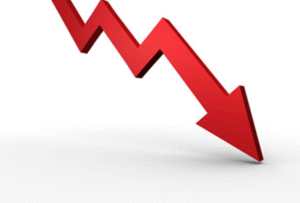NFIB: Small business optimism on the decline
The NFIB Small Business Optimism Index decreased slightly in October by 0.9 points to 98.2. One of the 10 Index components improved, seven declined, and two were unchanged.
 “We are now more than a year and a half into the Covid-19 pandemic, and our small business owners have an overwhelming message — they are still uncertain about the future here in Connecticut,” said Andrew Markowski, NFIB State Director in Connecticut.
“We are now more than a year and a half into the Covid-19 pandemic, and our small business owners have an overwhelming message — they are still uncertain about the future here in Connecticut,” said Andrew Markowski, NFIB State Director in Connecticut.
“One of the biggest problems for our mom-and-pop shops is the inability to hire qualified workers to fill a number of open positions,” he added. Add that to supply chain issues and that could equal a problem for Connecticut shoppers heading into the holiday season.”
According to the group”™s latest report, small business owners expecting better business conditions over the next six months fell four points to a net negative 37%. That indicator has declined 17 points over the past three months ”“ and is now at its lowest level since November 2012.
As reported in NFIB”™s monthly jobs report, 49% of owners reported job openings that could not be filled, a decrease of two points from September. A net 44% of owners (seasonally adjusted) reported raising compensation, a 48-year record high reading. A net 32% plan to raise compensation in the next three months.
Fifty-six percent of owners reported capital outlays in the last six months, up three points from September. Of those making expenditures, 40% reported spending on new equipment, 24% acquired vehicles, and 14% improved or expanded facilities. Seven percent acquired new buildings or land for expansion and 12% spent money for new fixtures and furniture. Thirty-one percent of owners plan capital outlays in the next few months, up three points and two points above the 48-year average.
A net negative 4% of all owners reported higher nominal sales in the past three months, down seven points from September. The net percent of owners expecting higher real sales volumes decreased by two points to a net 0%.
The net percent of owners reporting inventory increases decreased three points to a net 0%. Thirty-nine percent of owners report that supply chain disruptions have had a significant impact on their business. Another 29% report a moderate impact and 21% report a mild impact. Only 10% of owners reported no impact from recent supply chain disruptions.
A net 9% of owners viewed current inventory stocks as “too low” in October, down one point from last month and near a record high level. A net 8% of owners plan inventory investment in the coming months.
The net percent of owners raising average selling prices increased seven points to a net 53% (seasonally adjusted). Six percent of owners reported lower average selling prices and 57% reported higher average prices. Price hikes were the most frequent in wholesale (78% higher, 4% lower), retail (72% higher, 4% lower), and construction (66% higher, 0% lower). A net 51% of owners (seasonally adjusted) plan price hikes.
The frequency of reports of positive profit trends decreased three points to a net negative 17%. Among owners reporting lower profits, 31% blamed the rise in the cost of materials, 25% blamed weaker sales, 9% cited labor costs, 9% cited the usual seasonal change, 6% cited lower prices, and 3% cited higher taxes or regulatory costs. For owners reporting higher profits, 56% credited sales volumes, 17% cited usual seasonal change, and 11% cited higher prices.
Two percent of small employers reported that all their borrowing needs were not satisfied. Twenty-three percent reported all credit needs met and 63% said they were not interested in a loan. A net 2% reported their last loan was harder to get than in previous attempts.